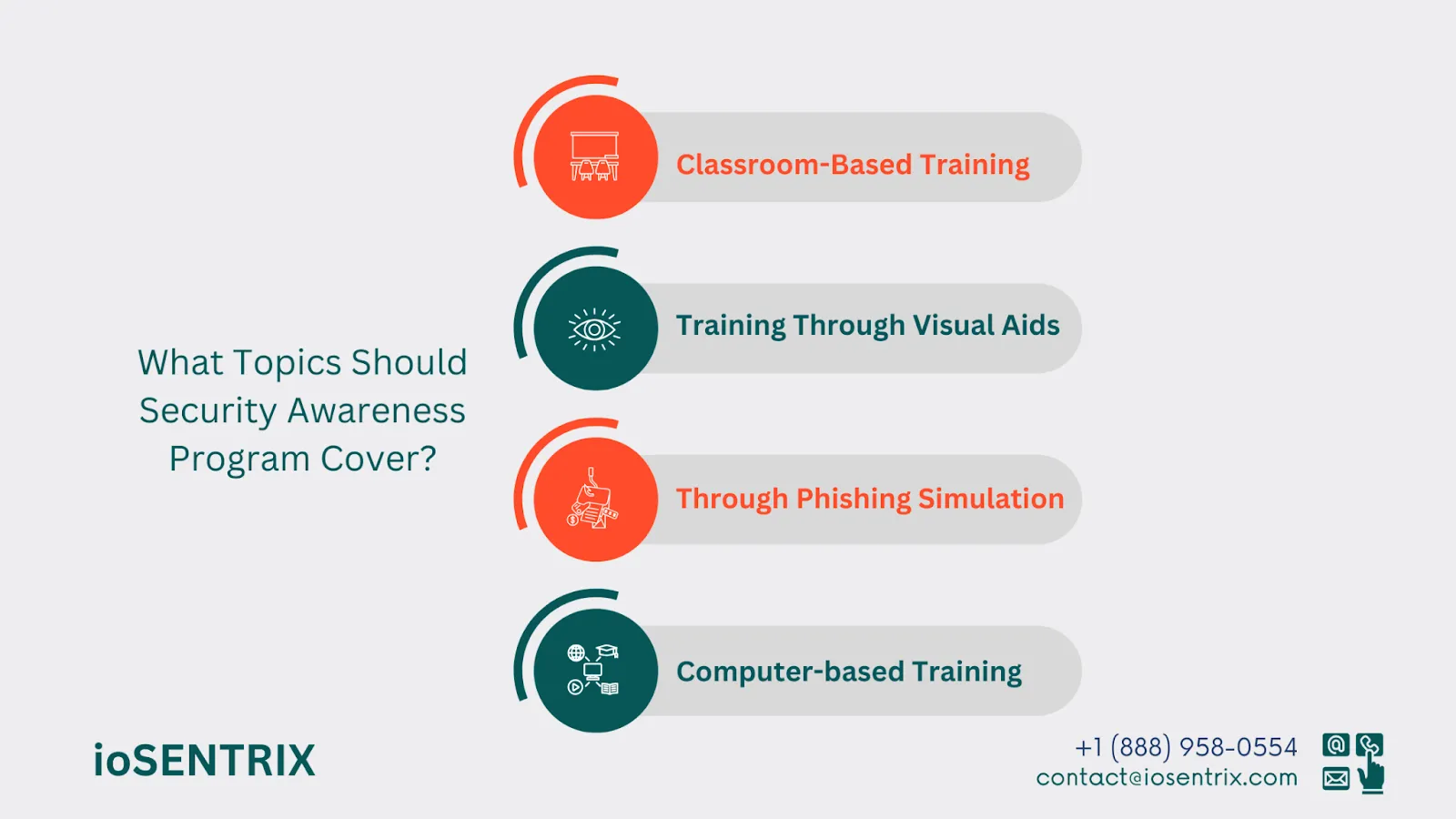
Training on information security awareness has traditionally been viewed as a compliance obligation rather than an effective security measure. With more advanced and complex cyber attacks, it is evident that this perception is outdated.
To comply with ISO 27001 standards, it is essential to adhere to clause 7.2. According to Claude 7.2:
“All staff and hired workers of the company must undergo thorough training in information security awareness. This training should cover the organization’s policies and procedures relevant to their roles, and regular sessions should be conducted to keep everyone updated.”
Equally important is to create a culture of information security in your organization and ensure all employees embrace it. Our staff members are key personnel in maintaining security, so it’s important to equip them with the right security mindset.
In this blog, you will get to know about:
Security awareness training is a security strategy employed by IT and security professionals to educate employees and stakeholders on the significance of cybersecurity and data privacy. Its primary objective is to enhance employee awareness and reduce the risks associated with cyber threats.
When creating a security awareness training program, companies need to stress to employees the significance of safeguarding the organization. They should outline the relevant corporate policies and procedures that explain how to work securely and specify who to reach out to in case of identifying any cyber threat.
Recent figures provide insights into the current state of security awareness. Let’s try to understand what they reveal.
Many people do not have the knowledge, tools, or support needed to protect themselves and their organizations from cyber threats. The average person's understanding of cybersecurity is often inconsistent, and this is not due to any fault of their own.

The increase in advanced cyber threats requires a shift in security awareness practices. Criminals are capitalizing on human behavior and risk tendencies.
There are substantial differences between traditional and modern security awareness training. Traditional training tends to occur annually or every six months, and focuses on technical aspects.
On the other hand, modern approaches (gamification, behavioral analytics, and real-time feedback) utilize a variety of engaging techniques to incorporate security into daily routines and discourage complacency. In the past, awareness training was likely one-sided and uninteresting. Nowadays, it is interactive, captivating, and even enjoyable for participants.
While traditional training often focuses on meeting compliance requirements through basic courses, it fails to effectively mitigate security risks. In contrast, modern platforms play a critical role in reducing the likelihood of breaches and safeguarding organizations from cyber harm, such as data loss and reputational damage.
A significant number of cybersecurity incidents are caused by human error. That’s where employee training comes into play. However, not all training programs are equally effective. So, let’s examine the primary methods of security awareness training, along with their advantages and disadvantages. Typically, security awareness training is provided in one of four ways.
This particular type of training involves individuals taking a break from their usual tasks to participate in security topics led by an instructor. The training offers immediate feedback and the opportunity to engage in conversations with the trainer.
This interactive approach often results in the acquisition of more practical knowledge compared to traditional methods like video seminars. However, there are concerns that classroom learning may not align with Adult Learning Theory, which suggests that such methods are more suitable for children than adults.
Also, classroom training can be costly and time-consuming, as it takes participants away from their regular responsibilities for a significant portion of the day. These factors can result in longer and less frequent sessions- impacting information retention negatively.
Visual aids, such as posters, handouts, and videos, are designed to influence cybersecurity behavior by utilizing images. These tools can cover various topics, including password security and phishing scams, and are highly effective as they are easy to understand.
Visuals simply convey complex information, without confusion. Additionally, they are cost-effective compared to traditional training methods, requiring only the expenses for a graphic designer (if necessary), printer ink, and paper.
Despite their benefits, visual aids also have some drawbacks. If the visuals are not engaging or interactive, they can easily be overlooked by the audience. As we become accustomed to things, we tend to stop noticing them.
Unlike traditional classroom training, there is no immediate feedback exchange between the presenter and the audience in visual aids. Lastly, research shows that follow-up assessments can enhance memory retention. Thus, using visual aids alone may lead to a decreased retention rate of crucial information.

One effective method of testing people’s reactions to cyber threats is through simulated attacks, such as sending phishing emails, SMS messages, or “misplaced” USB sticks. Research shows that simulating attacks is a powerful way to reinforce messages in people’s minds and influence long-term behavior.
However, not everyone agrees on the effectiveness of simulated attacks, with some arguing that they may be counterproductive or even unethical. As proponents of behavioral science, we acknowledge that poorly executed phishing simulations can have adverse effects.
Thus, it is essential to ensure that simulated attacks are conducted in a way that maximizes their benefits and minimizes potential harm.
Various forms of online training are available, including text, audio, video, and quizzes. The training can be updated with new modules to address emerging threats. While some providers offer compliance-based training as a mere check-the-box exercise, effective training should aim to influence long-term security behaviors and mitigate breach risks.
Seek training from security specialists rather than general training providers, as not all security specialists are equally skilled. Make sure the training program demonstrates how it can shape security behaviors and promote a security-centric culture.
Learn how ioSENTRIX helps businesses effortlessly integrate continuous security awareness training that aligns with industry standards and enhances user resilience with simplified administrative automation.
To learn more about our service, contact us here.